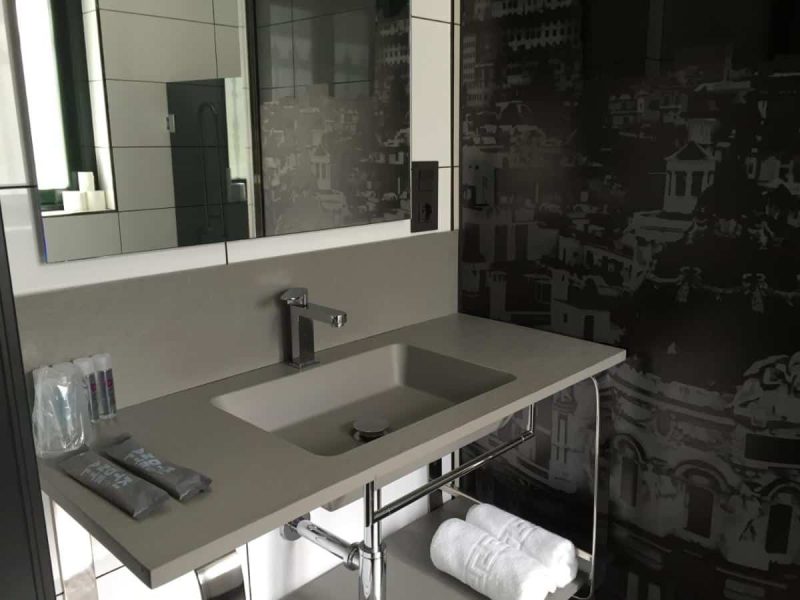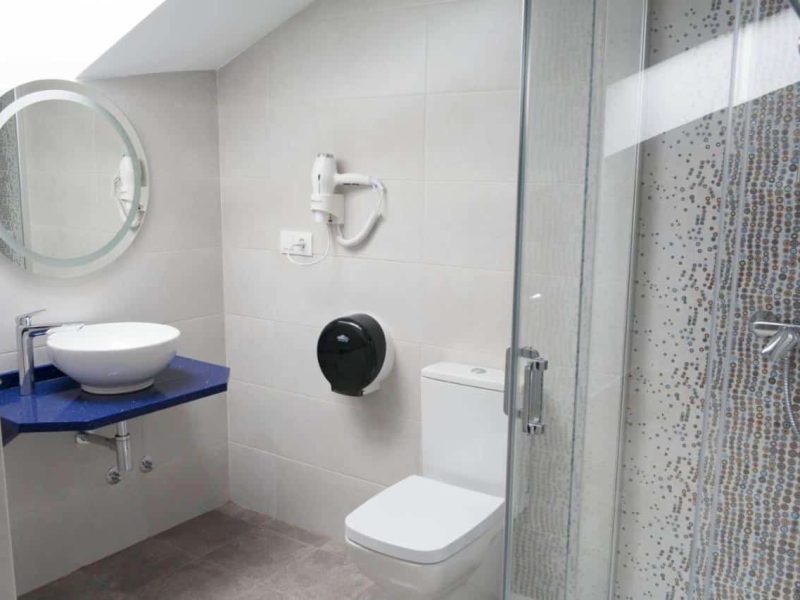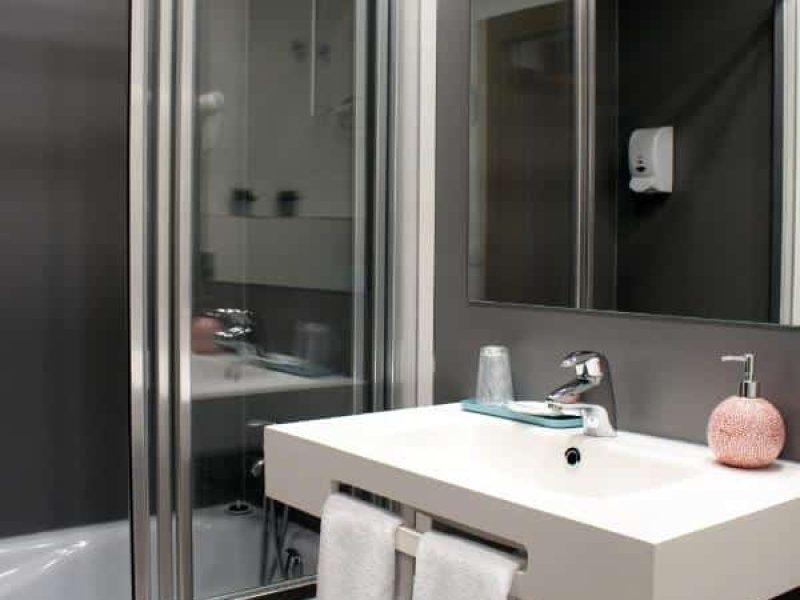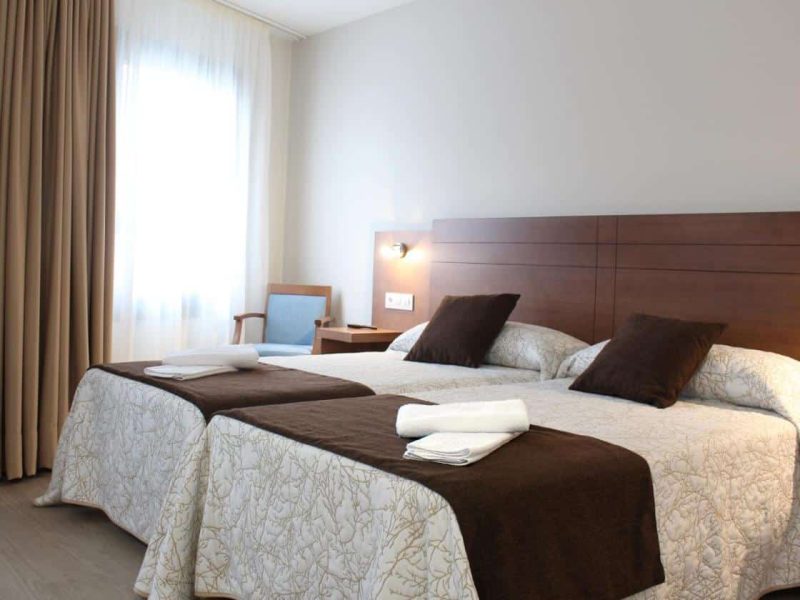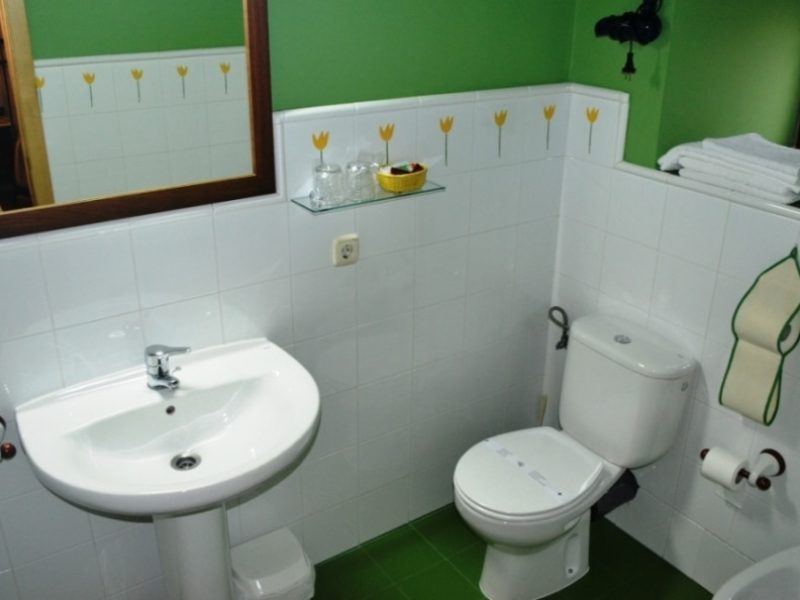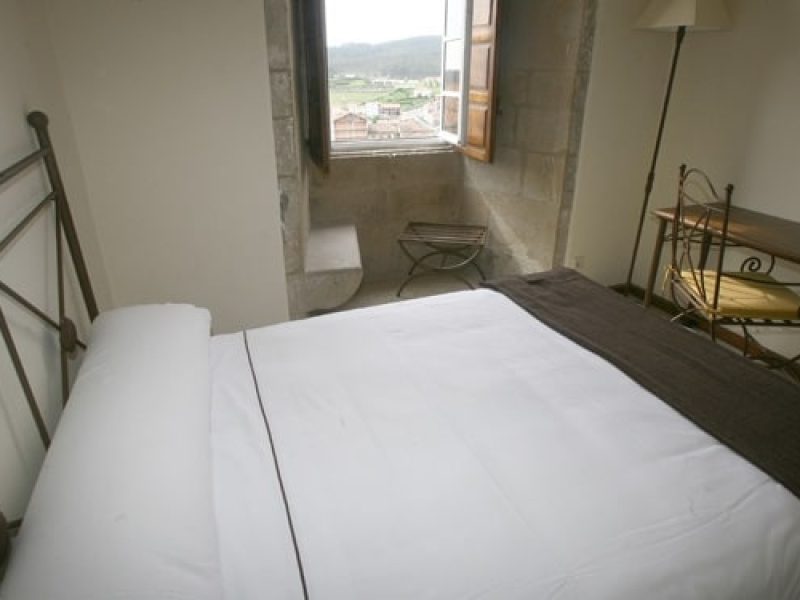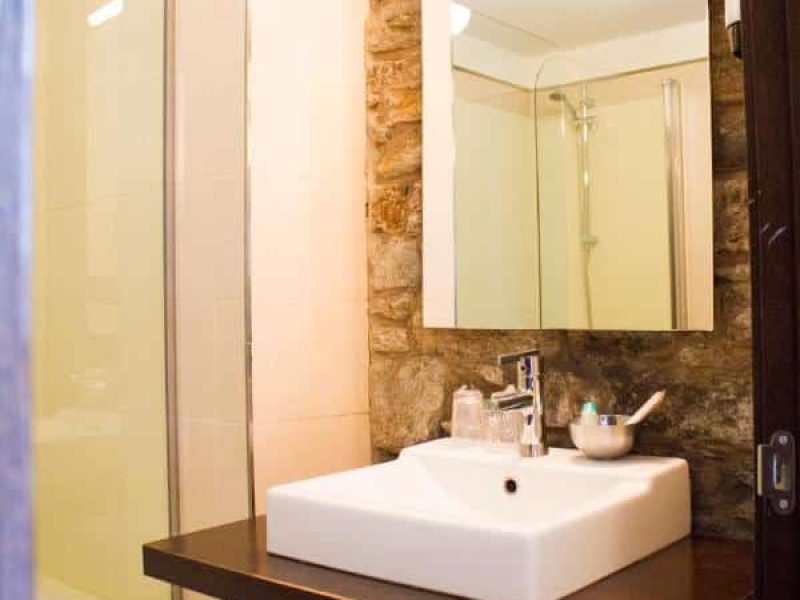Way from Sarria to Santiago
A unique journey
Your journey to the European essence.
Way
Immerse Yourself in History and Landscapes
Ready for a unique journey that will take you through breathtaking landscapes and historical sites? Imagine walking along centuries-old trails, carved by pilgrims over the ages. From majestic landscapes to tangible history, the Camino from Sarria to Santiago de Compostela is your ideal adventure.

Your adventure begins here
If you’re seeking a special adventure, we introduce you to a journey that promises inner exploration and a connection with the essence of European history.
From millennia-old culture to authentic gastronomy, each day on the Camino will bring you unforgettable moments that will stay with you throughout your life.
For those seeking enrichment, like-minded company, and unique experiences, we are here for you. Your peace of mind matters: we provide all the necessary services, allowing you to enjoy your journey. Ready to start this adventure on the Camino de Santiago from Sarria?

More details
Origin
Sarria

Destination
Santiago of Compostela

Duration
7 days / 6 nights / PREMIUM

Total Kms
111 kms

Price / people
€570 (double room)
Book now!
Please Indicates the number of people.

services
Services
Full and customizable services for a worry-free experience on the Camino de Santiago.
Services Included
- Accommodations in Hotels, Manor Houses, Rural Houses, Hostels
- Special breakfast to start your days with energy.
- Travel assistance insurance valid throughout Spain.
- Assistance vehicle available in case of emergency during your trip.
- Digital informative dossier of the Camino to keep you informed.
- Telephone assistance en route to answer any questions.
- Luggage transfer at each stage: 1 bag per person with a 20 kg limit!
- Special gifts, including the Pilgrim's Credential, the Pilgrim's Scallop and a typical Galician product.
- No cancellation fees up to 10 days before starting the Way.
- VAT included in the price.
Optional Services
- Possibilidade de dividir a etapa de Palas de Rei a Arzua em 2 dias.
- Noite extra em Santiago.
- Cancellation Insurance for residents in Spain.
- Cancellation Insurance for residents abroad.
- Day trips by bus to Finisterre (Costa da Morte) and/or Rias Baixas. See our tours for more details.
- Option to carry additional luggage if you need more than 1 suitcase per person.
Remember that the cost of the optional services you choose will be added to the base price of your route. We are committed to making your pilgrimage an unforgettable and worry-free experience. Welcome to the Camino!
Etapas do Caminho de Santiago desde Sarria
Your Journey in 5 Stages: Discover the Camino de Santiago, from Sarria to the majestic Santiago de Compostela.
Day 1: Arrival in Sarria. Accommodation.
Welcome to the beginning of your journey. Get ready for an unforgettable adventure!
Day 2: Stage from Sarria to Portomarín (22.75 km)
- Duration: 5h 30m
- Difficulty: Low
Breakfast and start of the first stage of our Camino de Santiago from Sarria.
This is one of the most emblematic sections of the Camino Francés, through which many pilgrims pass on their way to Santiago de Compostela, and where we encounter the mythical milestone of the “kilometer 100.”
The beauty of its landscapes is noteworthy, with majestic forests along the riverbanks, enhancing the charm of the place.
We traverse the narrow and sometimes winding “corredoiras” that connect paths between the typical Galician villages of rural Galicia, with their rich architectural heritage, without much difficulty and in a comfortable manner.
Finally, it’s worth mentioning the views of the Belesar Reservoir as we approach Portomarín, under which the old town is submerged.
Arrival in Portomarín. End of stage. Accommodation.
Day 3: Stage from Portomarín to Palas de Rei (25 km)
- Duration: 6h 15m
- Difficulty: Low
Breakfast and start of the stage.
We begin the Camino and after leaving Portomarín, we ascend towards the Serra de Ligonde.
During this journey, which is easily traversed due to the type of terrain, we encounter sacred symbols with significant religious connotations, called “Cruceiros”.
It is also worth mentioning some temples that we come across near the town of Palas de Rei, such as the Monastery of San Salvador de Vilar de Donas.
Arrival in Palas de Rei. End of stage. Accommodation.
Day 4: Stage from Palas de Rei to Arzúa (29.5 km)
- Duración: 7h 30m
- Dificultad: Media
Breakfast and start of the stage.
This stage is the longest one that goes through Galicia.
We leave Palas de Rei and the province of Lugo, entering the province of A Coruña and venturing into its dense forests that lead us to a path of oaks and eucalyptus trees.
We pass through and visit villages like Leboreiro and the town of Melide, well-known for its octopus, which must be tasted without fail.
We continue towards sites of great beauty like the Catasol River. Through its beautiful surroundings, we reach the Ribadixo da Baixo Bridge and the Municipality of Arzúa, renowned for its cheeses.
Arrival in Arzúa: End of stage. Accommodation.
👣 RECOMMENDATION 👣
Aquellos peregrinos con preparación física baja o que prefieran realizar esta etapa más larga mas relajadamente, sería aconsejable dividirla en dos días:
Etapa: Palas de Rei – Melide (15,2 Kms)
Etapa: Melide – Arzúa (14,5 Kms)
Day 5: Stage from Arzúa to Pedrouzo (19.2 km)
- Duración: 4h 30m
- Dificultad: Baja
Breakfast and start of the stage.
Comfortable journey with slight inclines where we traverse forest tracks that pass through small villages, alternating with sections of way.
Once again, the protagonists are the eucalyptus trees that populate the meadows, adorning the Galician horizon one after another. The arrival in Santiago de Compostela and its Cathedral is approaching.
Arrival in Pedrouzo. End of stage. Accommodation.
Day 6: Stage from Pedrouzo to Santiago de Compostela (19.9 km)
- Duración: 5h
- Dificultad: Baja
Breakfast and start of the stage.
Arriving in Santiago is something special for every pilgrim. Many sensations mix, but the excitement when stepping into the Plaza del Obradoiro is guaranteed.
The route once again passes peacefully among masses of trees, leading us to the last villages of the O Pino area.
From the hill of Monte do Gozo, the city of Santiago de Compostela awaits us, and thus begins a journey through the urban area that ends at the Cathedral.
Arrival in Santiago de Compostela. End of “The Last 100 Kms of the Camino de Santiago from Sarria” and the beginning of “Your true Camino”. Accommodation.
All of Santiago de Compostela is worth mentioning, especially the Cathedral of Santiago and its restored Portico of Glory, which deserves a special visit, as well as its surroundings.
DID YOU KNOW that the Camino de Santiago from Sarria does not end at the Cathedral of Santiago?? Until the end of the world! Ultreia et Suseia!
Once in Santiago, which is the end of the Camino Francés, if you have more days, you can extend your journey to Finisterre-Muxia, which was once, for our ancestors, “the end of the known world.”
Another option is to add additional nights in Santiago and take day trips to Finisterre and/or Rías Baixas.
Day 7: Breakfast - End of our services
We’ve reached the last day of your journey! Enjoy a breakfast and conclude this unforgettable experience with us. Thank you for being part of this adventure!
“This itinerary will take you through the most popular stages of the French Way and will allow you to experience the beauty of Galicia and the culture of the Camino de Santiago. Make sure to book accommodation in advance, as it can get busy, especially during the peak season. Have a good trip and buen Camino!“
Lodging
In our constant effort to provide the best experience for our clients, we want to assure you that we are committed to your rest and comfort. The accommodations we offer have been carefully selected and provide private rooms with an exclusive bathroom, along with all the necessary services to ensure you enjoy your stay to the fullest. It is important to note that we will never accommodate you in hostels.
Since these accommodations have limited capacity, we will provide you with the exact name once you confirm your reservation and verify availability on the dates of your choice. Your satisfaction is our priority!

Mundiplus VS. other Camino travel agencies
| 2025 | Customize the route 100% | Payment and Reservation fee | Luggage transfer | Support Car | Breakfast included | DAYS of FREE cancellation before the trip | Google Rating | National Travel Insurance | Price |
|---|---|---|---|---|---|---|---|---|---|
| Mundiplus | YES | 100€ | YES, up to 20 Kg | YES | YES | YES. Up to 10 days before. | 4.9 / 5 | YES | 545€ All included. |
| Competitor 1 | NO | 100% of the trip | YES, additional cost | YES | NO | 15 days | 4.8 / 5 | YES | From 387€. No breakfast (+57€), no luggage transfer (+37€). |
| Competitor 2 | YES | 30% of the trip | YES, up to 15 Kg | YES | NO | NO. 15% cancellation fee. | 4.8 / 5 | YES | 620€ in Hotels. No breakfast (+85€) |
| Competitor 3 | YES | 30% of the trip, with a minimum of 100€/pax | YES, from 7€/stage and up to 15 Kg | YES | NO | NO. 100 euros non-refundable | 4.7 / 5 | YES | Request required. No luggage transfer (+7€/stage) |
| Competitor 4 | YES | 20% of the trip | YES, up to 20 Kg | YES | YES | NO. Over 30 days, 80% penalty. Less than 30, non-refundable. | 4.5 / 5 | NO | From 565€ |
| Competitor 5 | YES | 20% of the trip | YES | YES | YES | 30 days | 4.7 / 5 | NO | From 601€ |
| Competitor 6 | NO | 50€ | YES | YES | YES | NO. Reservation fee penalties. | 4.7 / 5 | YES | From 535€. Single supplement from 305€ |
Frequently Asked Questions
The Camino de Santiago from Sarria in 7 days.
The generic route we propose takes place over 7 days – 6 nights – 5 stages. If you have fewer days available, we can also design the Camino de Santiago in 4, 5, or 6 days.
We understand that your goal remains reaching the Cathedral of Santiago, so we can consider different alternatives:
> Propose that you walk more kilometers per day, as long as your physical condition allows it.
> Eliminate some stages that may be less attractive and cover those kilometers by vehicle.
The last 100 kilometers of the Camino de Santiago from Sarria (Short stages)
The Camino de Santiago from Sarria, in the Lugo region, is part of the French Way variant, and as you can see in the preceding itinerary, it consists of 5 generic stages with an average of 22 km per day. However, at Viajes Mundiplus, we can adjust the kilometers based on your physical capacity and the level of relaxation with which you want to approach this millennial route.
This itinerary we have designed for the Last 100 Km of the Camino de Santiago from Sarria with shorter stages than the established ones is intended for those who want to complete this section of the French Way with even greater relaxation.
The stage breakdown we have prepared is ideal for families with young children and for older individuals who, due to physical aspects, can only or prefer to walk fewer kilometers than the general stages.
Thus, our new proposal for doing the Camino from Sarria in 10 days would be:
Adjusted Itinerary (10 days-9 nights-8 stages)
Day 1.- Arrival in Sarria. Accommodation.
Day 2.- Stage Sarria – Ferreiros (13.75 km). Accommodation.
Day 3.- Stage Ferreiros – Gonzar (17 km). Accommodation.
Day 4.- Stage Gonzar – Palas de Rei (17 km). Accommodation.
Day 5.- Stage Palas de Rei – Melide (15.2 km). Accommodation.
Day 6.- Stage Melide – Arzúa (14.3 km). Accommodation.
Day 7.- Stage Arzúa – O Empalme (15 km). Accommodation.
Day 8.- Stage O Empalme – Lavacolla (15 km). Accommodation.
Day 9.- Stage Lavacolla – Santiago de Compostela (10 km). Accommodation.
Day 10.- Breakfast. End of our services.
What to eat and typical dishes in the last 100 kilometers of the Camino Francés?
We know that one of the main attractions of doing the Camino de Santiago with organized trips in the Galician lands is being able to enjoy its varied gastronomic offer: Lacon with grelos, octopus, tetilla cheese, empanadas, stews, etc.
Completing the journey on the Camino Francés is an ideal alternative not only to get to know the customs of these historically marked villages. It’s also the perfect excuse to enjoy a very varied gastronomy.
Furthermore, as you may know, this is the most popular route of all that lead to the Cathedral of Santiago. What do we mean by this? You’ll find a plethora of gastronomic offers along your way through any town. So many, that it’s completely impossible to list them all in these lines.
That’s why we want to help a bit in a detailed way. If you don’t know where to eat along the Camino Francés from Sarria to Santiago, we’ll give you some suggestions. Of course, we’ll also talk about the typical dishes that characterize this route.
Gastronomy on the Camino Francés
Eating well during this journey is as important as having good equipment or sleeping in comfortable accommodations. Throughout the route of this path, you’ll find different restaurants offering the Pilgrim’s Menu. The vast majority include bread, a drink, two dishes of traditional gastronomy, and dessert.
Additionally, the dishes have an excellent price. Best of all, you’ll be able to taste products characteristic of these localities, including: cheeses, chestnuts, or honeys, as well as different typical dishes. Among the main ingredients are octopus, fish (eels), seafood, and game meats.
Similarly, don’t miss out on the main desserts, including: the tender sponge cakes of Samos and the Portomarín cake. The latter is made with a base of almonds and sweet melindres, similar to a glazed donut typical of many Galician regions.
Typical dishes and products you’ll find on the Camino Francés
It’s normal that if you’re thinking of making such a long journey, you’ve thought about what to eat during this trek. And those few kilometers deserve a good gastronomic reward. Of course, in all the towns from Sarria to Santiago you can find delicious products and typical dishes that you’ll love.
Sarria
Among the typical dishes you can enjoy in Sarria, we can highlight octopus “a feira,” potato omelettes, and padrón peppers. They also offer a great variety of meats such as T-bone steak or grilled ribeye.
Similarly, homemade croquettes are delicious, as are game meats (partridge or wild boar). And as if that weren’t enough, you can try the celtic pig. This is a native breed of pig recovered with which they prepare excellent sausages (chorizo or pressed cracklings).
You should also consider visiting the bread museum and the production of tetilla cheeses. There you’ll have an unparalleled gastronomic experience.
Portomarín
In this town, you can taste quality Galician products such as chestnuts, breads, cheeses, pork, and veal. Additionally, you can taste the typical dish. This is made with eel, which is a teleost fish that lives between the sea and the river, so its meat is highly valued.
Similarly, you can’t miss the exquisite eel empanadas accompanied by orujo spirits. And for dessert, we recommend the typical Paradela cake, made with flour, eggs, sugar, and almonds.
Palas de Rei
This is a well-known town on the Camino de Santiago Francés. Undoubtedly, its typical dish is Padrón peppers and Herbón peppers. So you should eat some fried peppers, toasted and topped with coarse salt.
It also stands out for its wide variety of fish and seafood (spider crab, shrimp, clam, octopus, carioca, trout, lamprey). It also includes among its specialties game meats in season and Galician veal.
It’s important to mention that cheeses and pork-derived products are in high demand among its visitors.
Arzúa
The quintessential product of this town is Arzua-Ulloa cheese. Its production takes place in the municipalities of Arzúa, Melide, O’Pino, Monterroso, and Palas de Rei. It’s a soft cheese produced with matured cow’s milk with a fine, elastic, bright yellow rind.
Its aromas are butter and yogurt with hints of vanilla, cream, and nut. Additionally, it has a sweet and sour taste at the same time. It’s ideal to taste alone or accompanied, as well as with quince jelly.
Pedrouzo
In this place, you can find products such as cheese, Ulla river wine, honey, fresh garden produce, and of course, veal and pork meats. Additionally, you can taste the rooster and hen of the piñeira breed, as it’s a dish exalted in the gastronomy of this locality.
Similarly, this locality offers typical Galician dishes such as octopus, Galician stew, and empanada.
Santiago de Compostela
In the capital of Galicia, you can taste a wide variety of traditional Galician cuisine dishes. We highlight octopus, fish, seafood, assorted empanadas, raxo, lacon with grelos, and broths.
Additionally, you can enjoy the famous tarta de Santiago, adorned with the Cross of Santiago. Also, you must try the Monterroso ham, the queixo do cebreiro or the Samos sponge cakes.
Where to eat from Sarria to Santiago?
Restaurants with Gastronomic Specialties
Of course, along the Camino de Santiago, there are establishments that are a must-visit. For example, on the route from Sarria to Santiago, there are restaurants with a wide variety of starters, wines, products, and specialties in typical dishes with an unparalleled presentation.
In Sarria, you can find pulperías do Luis, Roma, and A Travesia Dos Soños.
In Portomarín, O Mirador, Restaurante Pérez, and Posada del Camino stand out.
Likewise, in Palas de Rei, you’ll find A Parada das Bestas, Mesón A brea, and Pulpería a Nosa Terra.
In Melide, we highlight its well-known Pulperías Ezequiel and A Garnacha.
Similarly, in Arzúa, the restaurants offering a wide menu selection include Casa Nene, Fonte do Picho, and Casa Teodora.
Another excellent place in Pedrouzo is the establishment O KM19 and Café-Bar O Pedrouzo.
In Santiago de Compostela, you have Abastos 2.0, Damajuana, and O Gato Negro, one of the most popular establishments in Santiago.
How to get to Sarria to start the Camino?
We provide you with different options on How to get to the Camino de Santiago from Sarria. This town marks the minimum distance, if you walk the Camino, of 100 kilometers to obtain the certificate of “La Compostela”.
Option 1: you can arrive by private car:
> and park your vehicle in Sarria. You can park in the vicinity of the accommodation where you stay. It’s a very safe and small town where there have been no security issues to date. Another option is to request private parking. When you finish the last 100 kms of the Camino Francés, you can return to your vehicle by bus or request our optional exclusive transfer service for you or your group.
> or you can arrive in your vehicle directly to Santiago de Compostela and park in Santiago de Compostela in private parking, which has very affordable costs, and once parked you can take a bus to Sarria (there is only one available schedule), or request our private transfer.
Option 2: Bus
Santiago>Lugo>Sarria (No direct option). From Santiago, you must make 1 transfer in Lugo and the total duration of both journeys is approximately 3h 15′.
‘ From Santiago de Compostela city or from its Airport, you can travel to Lugo with the bus company Freire.
‘ In Lugo, you’ll have to transfer to Sarria with the bus company Monbus.
Madrid>Lugo>Sarria
‘ From Madrid to Lugo with the company Alsa, with frequent departures from the South Bus Station of Madrid, and from Madrid Airport (Terminal 4)
‘ From Lugo to Sarria with the bus company Monbus.
*We recommend spending a few hours and visiting Lugo and its walls before heading to Sarria
Option 3: Train (Renfe). Direct trains every day from Madrid and Barcelona. Currently, on the stretch from Madrid to Sarria, the train arrives in Ourense and from here Renfe provides travelers with a bus from Ourense to Sarria (approximately 1h 15′). This is due to ongoing construction works until July 2023 inclusive.
Option 4: Plane
The nearest airport to Sarria is Santiago de Compostela, approximately 1h 15′ by car.
From here, there are two possibilities to get to Sarria:
‘ By bus, option seen previously.
‘ Private transfer with us: pick up at Santiago Airport and direct transfer to Sarria in approximately 1h 15’. Consult us for the service fee.
Upon your arrival in Sarria, a memorable experience begins, and in the next point, we recommend what to see and do on your Camino de Santiago from Sarria.
What to see and do on the Camino de Santiago from Sarria (Travel Guide)
Stage from Sarria to Portomarin
In Sarria, we can see, among other things, the Church of San Salvador, a Romanesque church with a Gothic façade, and the convent of A Magdalena. We will admire the tower of the ancient medieval castle, as well as the Rúa Maior.
We leave Sarria through the Ponte Aspera to continue towards Barbadelo and Ferreiros, where we find two Romanesque churches: the Church of Santiago (Barbadelo) and the Church of Santa María (Ferreiros).
Portomarin is a beautiful town bathed by the Belesar Reservoir, where the ancient city is submerged (it can be seen in summer when the river’s flow is lower).
The town is divided into two neighborhoods: San Nicolas and San Pedro. A visit to the Chapel of Our Lady of the Snows is a must, as well as the magnificent church-fortress of San Nicolás, erected by the monk-knights of the Order of Saint John of Jerusalem in the 12th century. The church was built by a workshop of disciples of Master Mateo. Portomarin produces one of the most recognized spirits in Galicia and holds an annual festival.
The Romanesque façade of the Church of San Pedro, the Pazo de Berbetoros from the 17th century, and the Pazo del Conde da Maza from the 16th century are other attractions that you can find in this beautiful town.
In Sarria, we can see, among other things, the Church of San Salvador, a Romanesque church with a Gothic façade, and the convent of A Magdalena. We will admire the tower of the ancient medieval castle, as well as the Rúa Maior.
We leave Sarria through the Ponte Aspera to continue towards Barbadelo and Ferreiros, where we find two Romanesque churches: the Church of Santiago (Barbadelo) and the Church of Santa María (Ferreiros).
Portomarin is a beautiful town bathed by the Belesar Reservoir, where the ancient city is submerged (it can be seen in summer when the river’s flow is lower).
The town is divided into two neighborhoods: San Nicolas and San Pedro. A visit to the Chapel of Our Lady of the Snows is a must, as well as the magnificent church-fortress of San Nicolás, erected by the monk-knights of the Order of Saint John of Jerusalem in the 12th century. The church was built by a workshop of disciples of Master Mateo. Portomarin produces one of the most recognized spirits in Galicia and holds an annual festival.
The Romanesque façade of the Church of San Pedro, the Pazo de Berbetoros from the 17th century, and the Pazo del Conde da Maza from the 16th century are other attractions that you can find in this beautiful town.
Stage from Portomarin to Palas de Rei
In Gonzar, we can visit the most important monument in this town: the Parish of Santa María.
In Castromaior, we find the small Church of Santa María, a simple and rustic Romanesque style but very well preserved. Inside, there is a Romanesque statue of the Virgin and an altarpiece from the 16th century.
In Ventas de Narón, we can see the Chapel of Magdalena.
The Church of Santiago in Ligonde, in neoclassical style, preserves the Romanesque portal of its predecessor. Just before entering the town, we find the Lameiros cross (1670), where the four sides of the base represent the Calvary or death of Jesus (hammer, nails, thorns, and skulls), while the cross depicts the relief of motherhood or life.
Stage from Palas de Rei to Melide
We begin in San Xulián do Camiño with the Parish Church of San Xulián, a Romanesque temple from the 11th century.
In Leboreiro, we can see the Romanesque Church of Santa María, where the tympanum of the portal and the 16th-century murals stand out.
In Disicabo, we highlight the small medieval bridge of Magdalena.
At the entrance to Furelos, we find a splendid four-eyed medieval bridge. Next to it, the Parish Church of San Juan.
Near Palas de Rei, although outside the route of what to see on the Camino de Santiago from Sarria, is the Church of Vilar de Donas in Romanesque style, the former Priory of the Order of Santiago. It dates from the 13th century. The Latin cross-shaped church has three vaulted apses and a crucero with ribbed vaulting. Inside, we can see several tombs of important knights of the Order of Santiago, as well as well-preserved frescoes. It is one of the most well-known examples of Galician Romanesque linked to the French Way.
The Pambre Castle, located in Ulloa, is one of the best examples of military medieval architecture in Galicia. It was built at the end of the 14th century by Don Gonzalo Ozores de Ulloa. The castle is situated on a rocky outcrop. It is surrounded by a defensive wall about 5 meters thick. It is accessed through a small pointed door. The square-shaped building has four towers at the corners and a keep in the center. Inside, we find the Chapel of San Pedro.
In Melide, as the endpoint of this stage on the Camino de Santiago from Sarria, we recommend the following places to visit:
– First of all, we cannot pass without tasting their famous octopus, in any of its renowned “pulperías.” It also has a magnificent ethnographic museum, Terra de Melide, recently built and unique in the area. Gastronomy on the French Way is one of the most renowned, not only on the Camino de Santiago from Sarria but also throughout Spain.
Additionally, we highlight the Melide Cross, which is said to date from the 19th century and is considered to be the oldest in the entire Galician region. Next to this magnificent cross, we find the Chapel of San Roque (a Romanesque jewel), which many people have found a resemblance to the 10€ banknote. The banknote simply reflects an example of strict Romanesque and is not associated with any specific monument (thus avoiding any issues). At least we can say that the arches and columns of the door of this chapel in Melide reflect the purity and perfection of the Romanesque style.
– We also highlight the Church of Sancti Spiritus and the Romanesque temple of Santa María.
– In the surroundings of Melide, we can also visit the Pre-Romanesque Church of San Antoniño de Toques, located in a spectacular setting in the middle of a waterfall that flows alongside the Church. The Pre-Romanesque style church consists of a nave. Above the triumphal arch is a Romanesque carving of a Calvary dating from the 13th century.
Outside the route of what to see on the Camino de Santiago from Sarria, but well worth a visit if we have time, is the Monastery of Santa María de Sobrado dos Monxes, located near Melide. It is one of the main medieval monasteries in the province of A Coruña and all of Galicia. It is believed to date from the 10th century, as several writings have been found that mention it. It has undergone numerous reforms from the 16th to the 18th century.
Today, the Church of the Monastery of Sobrado dos Monxes is in good condition, as well as part of its monastic dependencies, thanks to the work of the Benedictine monks who inhabit it. The church dates from the 17th century and is in Baroque style. It features a spectacular façade with two slender towers. The entire interior is worth admiring. The monastery has three cloisters. It was declared a National Historic-Artistic Monument.
The Pre-Romanesque Church of San Antoniño de Toques, located in a spectacular setting in the middle of a waterfall that flows alongside the Church. The Pre-Romanesque style church consists of a nave. Above the triumphal arch is a Romanesque carving of a Calvary dating from the 13th century.
Stage from Melide to Arzúa
In Boente, we highlight its Church of Santiago, with a statue of the Apostle from the 19th century.
In Ribadixo do Baixo, after crossing the medieval bridge, we find the Ribadixo Pilgrim’s Hospital, the last historical space that remained open for the pilgrim’s service. In the Ribadixo recreational area, we can stop for a moment to refresh our feet in the river.
In Arzúa, the Church of Santiago stands out, with the Gothic Chapel of Magdalena, which belonged to a disappeared hospital. Next to a carballeira, the chapel of A Mota also stands out.
About 5 km outside the route of what to see on the Camino de Santiago from Sarria, we find the Pazo de Brandeso, where Valle-Inclán set part of his novel *Sonata de otoño*. The Pazo is privately owned and cannot be visited. It is a stately building with a chapel on its main façade.
Stage from Arzúa to Pedrouzo
In this stage, we can highlight the Parish Church of San Verisimo in the town of Ferreiros.
In Santa Irene, we can visit the Chapel of Santa, which gives the town its name. A hermitage dedicated to this Portuguese martyr saint. Also noteworthy is a Baroque fountain, said to have healing properties for the skin.
We cannot miss the opportunity to taste the magnificent Tetilla cheese from Arzúa. Since 1989, this artisanal cheese, made from natural whole cow’s milk, has received the *Produto Galego de Calidade* designation. It is produced in all the municipalities of the Arzúa-Ulloa region: Arzúa, Curtis, Melide, O Pino, Santiso, Sobrado dos Monxes, Toques, Touro, and Vilasantar (in the province of A Coruña), as well as Friol, Monterroso, and Palas de Rei (in the province of Lugo).
Stage from Pedrouzo to Santiago
Before reaching Santiago, about 4 km away, Mount Gozo offers an incredible panoramic view of the city.
In Santiago de Compostela, we find the most important monument of our entire route, the Cathedral of Santiago, whose façade has been recently restored, dedicated to the Apostle Santiago. And as details of the Cathedral:
It was consecrated in the year 1128 and is a good example of a pilgrimage church.
In Romanesque style, with later Renaissance and Baroque elements from the 18th century. It has a Latin cross-shaped plan, with three naves divided by semicircular arches, a tribune, transept, and ambulatory.
From Master Mateo, the Pórtico de la Gloria stands out as the best example of Spanish Romanesque.
As a tradition, any pilgrim who wants to and is able to, attends the 12:00 and 19:30 pm Mass in the Cathedral. There, with a bit of luck, they may witness the magnificent botafumeiro in action. *In 2019 and 2020, due to restoration works inside the Cathedral, this Mass was held in other nearby churches. The Cathedral is preparing its best ornaments for the upcoming Holy Year 2021-2022.
The entire old town is spectacular and takes us back to medieval times without us realizing it. It is home to the Santiago Market. We also highlight the Galicia Pavilion in the San Lázaro district, the Pantheon of Illustrious Galicians (next to the museum), the Chapel of As Animas, the Praza de Cervantes, the Museum of the House of Troya, and more.
On the other hand, you can also explore the surroundings of Santiago and take organized excursions to the Costa da Morte and Rias Baixas.
Another tradition is the embrace of the image of the Apostle Santiago and the visit to his tomb.
The Cathedral Museum is a must-visit, as well as the visit to the Cathedral’s roofs.
The Monastery of San Martín Pinario, opposite the Plaza de la Azabachería.
The Portada del Parador de los Reyes Católicos, in the Plaza del Obradoiro, was founded as a pilgrim hospital.
To conclude our *What to See on the Camino de Santiago from Sarria to Santiago*, we recommend discovering these incredible places for yourself and sharing with us your thoughts on them.
How many kilometers are there from Sarria to Santiago de Compostela?
The section from Sarria to Santiago de Compostela is approximately 115 kilometers. As you may know, 100 kilometers is the minimum distance required to obtain the “Compostela”, the official certificate that proves you have completed the Camino.
How many stages are needed to complete the Sarria-Santiago section?
As you may have seen, it is generally divided into 5 stages (plus the arrival and departure days), walking around 20-25 kilometers per day. However, the number of stages may vary depending on each pilgrim’s pace and preferences.
- If you need to complete the Camino de Santiago from Sarria in 6 stages, we can help you adjust the itinerary by dividing one of the planned stages.
- Doing the Camino de Santiago from Sarria in 4 stages? Yes, it is possible, but we do not recommend it. Besides not fully enjoying the experience, combining two of its stages may be quite physically demanding.
Is it necessary to have a pilgrim's credential to do the Camino from Sarria?
Yes, it is recommended to obtain the pilgrim’s credential before starting the Camino. This document is necessary to stay in hostels and to have it stamped at each stage, which is a requirement to obtain the Compostela upon completion.
What is the best time of year to travel from Sarria to Santiago?
The best times are spring (April to June) and autumn (September and October), when the weather is more pleasant and there are fewer pilgrims than in summer.
What level of difficulty is the section from Sarria to Santiago?
This section is considered of moderate difficulty. The terrain is hilly with some ascents and descents, but it does not have significant slopes, making it suitable for pilgrims with a basic physical condition.
Do I need to prepare physically to do the stretch from Sarria to Santiago?
Although the section is accessible, it is recommended to have a basic physical preparation. Doing some previous walks and resistance exercises can help you enjoy the journey more and avoid injuries.
How can I obtain the Compostela if I start the Camino in Sarria?
By completing at least the last 100 kilometers of the Camino and getting your pilgrim’s credential stamped at least twice a day, you can request the Compostela at the Pilgrim’s Office in Santiago.
What equipment is essential for the Camino from Sarria?
It is important to wear comfortable, well-worn shoes, a light backpack, suitable clothing for different weather conditions, a raincoat, sunscreen, and personal hygiene items.
Is it safe to do the Camino from Sarria alone?
Yes, the Camino de Santiago is generally safe, and many people do it solo. Of course, it is always advisable to take basic precautions and stay aware of your surroundings.
What kind of food can I expect on the stretch from Sarria to Santiago?
Galician cuisine is rich and varied. You will be able to enjoy dishes such as Galician-style octopus, empanada, Galician broth, and local cheeses like Arzúa-Ulloa.
Is there an internet connection and mobile signal in the section?
Most accommodations and cafés offer free Wi-Fi. Mobile coverage is generally good, although there may be rural areas with limited signal.
What are the main points of interest on the stretch from Sarria to Santiago and what makes them special?
The Camino from Sarria to Santiago is full of historical, cultural, and natural landmarks:
- Portomarín and its Church of San Nicolás: This town was rebuilt stone by stone in the 60s due to the construction of a reservoir. Its Romanesque fortress church, dedicated to San Nicolás, is an impressive example of medieval architecture.
- The Lameiros cross in Ligonde: Considered one of the most beautiful and ancient crosses on the Camino. It dates back to the 17th century and depicts scenes of the crucifixion and purgatory, offering a deep insight into Galician spirituality.
- The enchanted forest of Ribadiso: Before reaching Arzúa, pilgrims cross this lush forest along the banks of the Iso River. It is a perfect place to connect with nature and enjoy a moment of serenity.
- Melide and its Galician-style octopus: This town is famous for its cuisine, especially the octopus served in traditional “pulperías”. It’s a must-stop to taste authentic Galician food.
Monte do Gozo: A few kilometers from Santiago, this hill offers the first view of the cathedral towers. It is an iconic place where pilgrims celebrate their proximity to their goal.
Do you still have doubts about the Camino?
This video will give you a more detailed and visual look at what to expect on your adventure. Don’t miss it!





